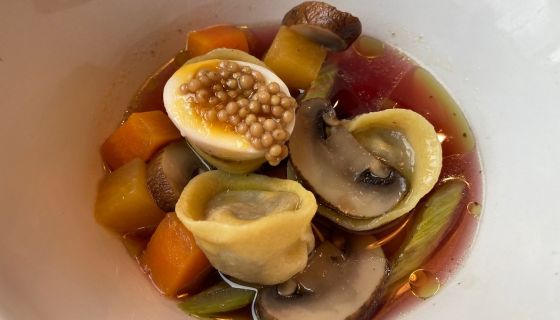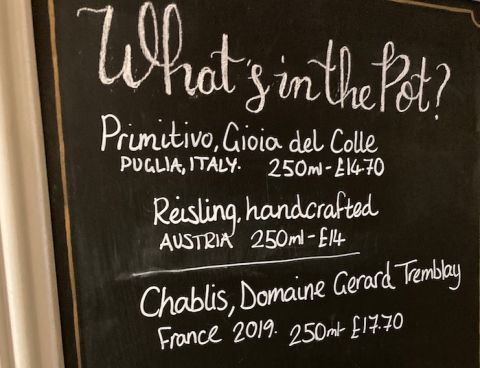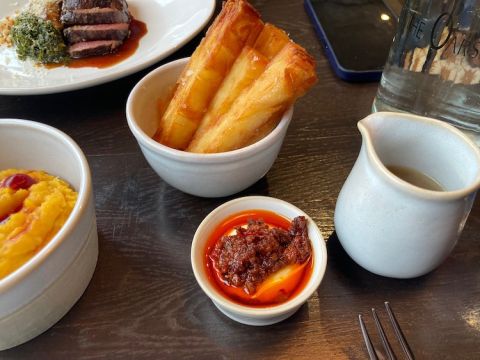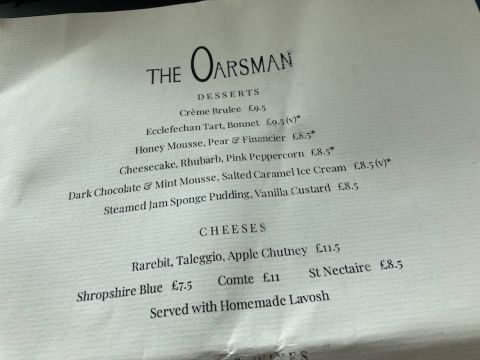A recent excellent lunch at The Oarsman in Marlow, Buckinghamshire, brought home to me one other prerequisite that every successful restaurateur has to possess: patience.
There is always a period of time – perhaps weeks if you are fortunate, if your restaurant is in the centre of London, Paris or New York, and if the critics are favourable – before your restaurant becomes sufficiently well known. Outside these central locations, it can take much longer, up to six months (depending on precisely when you open) before this happens.
It also depends on the competition. I am always reminded of a comment of my late grandfather’s: ‘Why do they sell 300,000 pairs of shoes on Oxford Street?’ His answer was always the same, ‘because Oxford Street has 300 shoe shops’. A substantial number of restaurants will attract a significant number of chefs and customers.
But there is one significant difference between customers looking for shoes and those looking for a restaurant table. The latter have a much greater loyalty and weaning them away takes time. Particularly, if the competition is as intense as that on the High Street of Marlow.
The street, to me at least as I walked from the station, seemed lined with restaurants and places to eat. This is where celebrity chef Tom Kerridge made his name, at The Hand and Flowers, then at The Coach, and also at The Butcher’s Tap and Grill, all of them in central Marlow. Then there is an Ivy; Atul Kochhar’s ambitious Vaasu; and several outposts of various chains such as Côte and Zizi. As well as these there are numerous pubs.
It was with his eyes wide open that James Lee reopened The Oarsman three months ago. It was his day job as a highly successful kitchen designer that initially led him into this secondary career and it was his professional relationship with Heston Blumenthal that led him to take a 25% stake in the latter’s pub, The Hind’s Head in Bray. When a financial readjustment took place, Lee was offered 100% share in the nearby Crown instead, a deal which Lee quickly accepted. The deal was made even more attractive by the fact that it also included two attractive personalities: Nigel Sutcliffe and James McLean.
Both individuals understand what customers today want when they go out, particularly but not exclusively in a pub setting. McLean has worked in kitchens all his working life and, equally importantly, has parlayed these skills into an equal understanding of modern technology, while Sutcliffe was for several years maître d’ at The Fat Duck; in these roles, as both practitioners and consultants, the couple have proved extremely successful.
The Oarsman makes itself different from all the other nearby restaurants by displaying what is, in my opinion, a unique wine list and in how it serves the wines. The list, which changes every week, includes over 300 wines. All are farmed sustainably, most organically, and a great many biodynamically. And for every bottle, except the old and the rare which oxidise too quickly, the staff will open and sell you a 500-ml carafe for which they will charge you two-thirds of the full bottle price. The leftovers are sold via a blackboard (displaying the odd spelling mistake!). This is surely an approach that should appeal to visitors to this website, a very friendly approach and one that allowed me to enjoy the last glass from a bottle of Fernand et Laurent Pillot, Tavannes 2018 Pommard.
There are over half-a-dozen sherries and champagnes on offer before a breakdown of the rest of the wines by style: whites are either ‘crisp, brisk and refreshing’, ‘aromatic’, ‘mineral’, ‘sea, sand and saline’ or Chardonnays. The reds are broken down into ‘fruity and juicy’, ‘best for grilled meats’, ‘mountains and volcanoes’, ‘classy’ and ‘classic red burgundy’, ending with a few bottles under the heading ‘rare and wonderful’. The list contains some exciting, well-priced wines.
Then there is the menu, which is in the hands of chef Scott Smith. Scottish, Smith came to London where he cooked in several top kitchens before he settled under Anthony Demetre and Will Smith at Arbutus and Wild Honey. He then moved back to work alongside Smith in his native Scotland before again moving south where he seems happily settled.
Smith, even after only three months, writes what reads as a happy menu, one that balances cleverly the left-hand side of each item – the protein, the part that appeals to most men – with the right-hand side, the sauces and vegetable accompaniment that tend to appeal to most women (or do I mean my wife?). His menu opens with white-onion velouté with an onion bhaji; there is a trout rillette with a sumac dressing; and a cheddar farinette, a buckwheat-flour pancake, served alongside a bitter-leaf salad. Main courses carried on this felicitous theme: potato gnocchi with sautéed mushrooms; a pork chop with an apple and prune puree; and roast bavette with chimichurri and what seems like Smith’s current favourite accompaniment, ‘nduja, the paste made from spicy Calabrian chillis.
I managed to pass on all these enticing dishes as my eye, and my stomach, were attracted by two first courses. The first was simply described as trotters and bacon, beef dripping, toast (£9) and was simply that. But it was delicious, soothing and very well prepared: the trotters and bacon were finely chopped and expertly piled across perhaps a slightly too thick piece of toast – but that is to pick a very small nit.
I followed this with ox-tongue tortellini, salt-beef broth and winter vegetables (£10.50) shown at the top of this article. This was stunning. Three pieces of pasta, stuffed with comforting meat, in a clear broth brimming with vegetables: mushrooms, diced carrots and celery, and enough beetroot to colour the consommé a bright red. I enjoyed this dish immensely alongside some crisp potatoes, to be dipped in ‘nduja, and a serving of bright orange clapshot, the classic Orkney dish of mashed swede, turnip and potatoes topped with redcurrants. All of which had one deleterious effect on my appetite. I was full.
So full in fact was I, that when I was offered the separate dessert menu, I declined it and this proved to be a huge mistake because when I looked at it later, I realised how foolish I had been. Smith has written a really delicious list of desserts and puddings, one that offers, among others, traditional Ecclefechan tart, a tart of the Borders served here with bonnet, a caramel custard; cheesecake with rhubarb; and the most enticing combination of a honey mousse, pear and financier. I will have to return.
Business outside London has been quieter than in London since the new year. The absence of tourists is obvious. But Lee, McLean, Smith and Sutcliffe know that they must not deviate too much from the course on which they have launched The Oarsman: great food, an excellent wine list, lovely service and plenty of tables outside for when the sun comes out. All this will surely soon make this an establishment that those other restaurateurs close by will have to reckon with.
The Oarsman 46 Spittal Street, Marlow SL7 1DB; tel: +44 (0)1628 617755

















